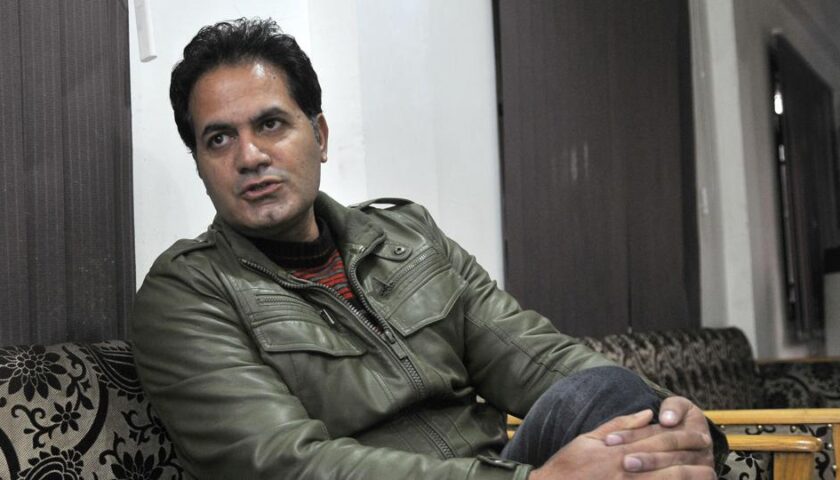A New Era for J&K Cricket
By: Javid Amin | 20 November 2025
Once regarded as perennial under-dogs in India’s domestic first-class circuit, the Jammu & Kashmir cricket team is quietly stirring up attention in the 2025-26 Ranji Trophy season. After years of struggle, the team has started to beat traditional powerhouses – such as in recent wins over Rajasthan, Delhi and Hyderabad – signalling that something has changed.
At the heart of this turnaround are three key figures:
-
Ajay Sharma, head coach — former India cricketer now channeling his experience into building belief and discipline in a side that long lacked both.
-
Shubham Khajuria, captain and opening batter — providing leadership from the top of the order and guiding the young squad with maturity.
-
Abid Mushtaq, left-arm spinner — a match-winner with the ball, whose breakthroughs have turned tight games in J&K’s favour.
This article explores how each of these men contributes, how the team culture has changed, the wider context of J&K cricket’s infrastructure and youth pipeline, and what the future may hold.
The Key Players
01. Ajay Sharma – The Architect of Change
Former India international Ajay Sharma took over as head coach of J&K back in 2022. According to reports, he arrived with a firm vision: instil discipline, build professional habits, change the mindset of the squad.
He reportedly likens his squad to “wolves hunting in packs” — emphasising teamwork, patience, and a collective mindset. His arrival coincided with improved training camps, better planning and more rigorous preparation.
In one notable moment, a media profile described how he approached the team’s culture overhaul — some senior players resisted initially, but he stayed the course.
02. Shubham Khajuria – The Leader at the Top
As captain and opening batter, Shubham Khajuria has played a critical role. His own batting form has been instrumental in anchoring the team. For example, during the 2024-25 season he scored significant hundreds and helped steer J&K into the knock-outs.
He also symbolises the change in culture: his mindset has shifted from just scoring runs to ensuring the team wins. In his words, influenced by Sharma: “play the long innings, refuse to surrender, believe you can beat anyone.”
03. Abid Mushtaq – The Match-Winner Spinner
Left-arm spinner Abid Mushtaq has emerged as a major force. In J&K’s dominant win vs Hyderabad by 281 runs, he took 7 wickets for 68 and dismantled the opposition’s batting line-up.
Though initially less heralded, Mushtaq’s growth has been a sign of the squad’s depth improving: a credible wicket-taker under pressure, turning matches in J&K’s favour.
Why This Matters: J&K’s Historic Turnaround
01. From Under-dog to Contender
Historically, J&K cricket had limited success: decades of struggle in Ranji Trophy with few wins and long gaps.
Now the team is setting new benchmarks: reaching knock-outs in 2024-25 and sitting high in the 2025-26 Group standings. For instance, beating Delhi for the first time in 65 years of Ranji participation.
These results carry symbolic value: they suggest that regions long considered marginal in domestic cricket can assemble competitive teams.
02. Big Wins Against Big Teams
Some recent, concrete wins underline their rise:
-
A comprehensive victory over Hyderabad by 281 runs.
-
Historic first win vs Delhi in Ranji Trophy history.
-
Consistent strong performances that no longer read as flukes.
03. Shift in Team Culture
The success is not just statistical—it reflects a cultural shift.
-
Under Sharma’s leadership, there is more training discipline, better preparation, clearer goals.
-
Khajuria’s emphasis on winning and preparation signals maturity.
-
Mushtaq and other emerging names show there’s talent pipeline, not just reliance on one star.
The result: J&K team is now as much about belief and structure as it is about individual talent.
The Wider Context: Infrastructure, Youth & Symbolism
01. Infrastructure Boost
Reports indicate that J&K’s cricket infrastructure has improved—with better coaching, guidance on domestic circuits, and more exposure.
While resources still lag compared to major states, the momentum is visible.
02. Youth Pipeline
Beyond the trio, J&K is seeing other players emerge—names like Abdul Samad, Henan Malik (mentioned in your summary) signal depth and future sustainability.
Training camps, exposure matches, and nurturing local talent are contributing to this pipeline.
03. Symbolic Rise of the Region
For a region often covered in terms of conflict, J&K’s rise in cricket carries social significance. Sports become a positive narrative, giving hope and identity beyond politics.
When J&K beats heavyweights, it resonates beyond the state—it matters to fans, youth, and aspiring cricketers.
Challenges & What Lies Ahead
01. Sustaining Momentum
Success today brings higher expectations tomorrow. J&K must avoid complacency, manage injuries, and maintain discipline to keep competing.
02. Competition and Ambition
To truly break into the top tier of Indian domestic cricket, J&K must consistently challenge Mumbai, Karnataka, Tamil Nadu etc. Wins against big teams help, but consistency across seasons matters.
03. Resource and Exposure Gaps
Even with improvements, J&K still battles infrastructural, financial, and exposure constraints compared to richer states. Maintaining and translating talent into performance will require continued investment.
04. Managing Pressure and Culture
With success comes pressure. The young squad must handle expectations, maintain mental strength, and continue the disciplined culture built by Sharma.
Analysis: What the Trio Reveal About Modern Domestic Cricket
01. The Role of Coaching
Ajay Sharma’s example shows that elite-level coaching can transform regional teams. Culture, training, mindset matter as much as talent. In many domestic circuits, coaching often is undervalued; J&K’s story highlights its potential.
02. Leadership from Within
Khajuria exemplifies leadership by performance and example. Opening batters often carry heavy load; his consistency and maturity help stabilize the team and give younger players confidence.
03. The Value of Match-Winners
Abid Mushtaq brings the X-factor many sides need. Having a reliable wicket-taker relieves pressure on batting and boosts the team’s ability to win outright, not just draw.
04. Changing Domestic Balance
J&K’s rise signals that domestic cricket in India may be becoming more competitive and less predictable. It suggests that with right processes, smaller states can punch above their weight.
Bottom-Line: A New Narrative for Jammu & Kashmir Cricket
The trio of Ajay Sharma, Shubham Khajuria and Abid Mushtaq symbolizes more than just a winning team. They represent:
-
A belief that J&K can change its cricketing story.
-
A culture effort that values preparation, maturity, and teamwork.
-
A message to youth in J&K and beyond: your region can produce winners too.
As J&K continues its Ranji Trophy journey, the story will be watched not only by cricket fans but by those interested in how sport, ambition and regional identity intersect in modern India.
Their rise reminds us: talent exists everywhere. What matters is opportunity, belief, support and structure. When all these align, surprising – and inspiring – results follow.




